Monuments at Gettysburg – 26th Pennsylvania Infantry
Posted By Norman Gasbarro on August 8, 2014
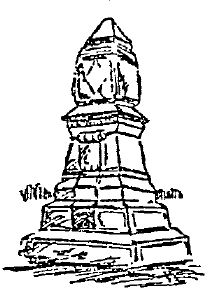 The 26th Pennsylvania Infantry Monument at Gettysburg is located south of Gettysburg on Emmitsburg Road. The drawing of the monument appeared with an article in the Philadelphia Inquirer on 11 September 1889 on the dedication and re-dedication of Gettysburg battlefield monuments.
The 26th Pennsylvania Infantry Monument at Gettysburg is located south of Gettysburg on Emmitsburg Road. The drawing of the monument appeared with an article in the Philadelphia Inquirer on 11 September 1889 on the dedication and re-dedication of Gettysburg battlefield monuments.
For more information about this monument and the 26th Pennsylvania Infantry as well as an additional view of the monument see Steve Recker’s Virtual Gettysburg Web Site.
A full description of the monument, its GPS coordinates, and some of the history of the 26th Pennsylvania Infantry can be found on the Stone Sentinels Web Site. There are also additional photographs of the monument and a note about 1st Sergeant John W. Roosevelt of Company B who received the Medal of Honor.
—————————-
On 11 September 1889, the Philadelphia Inquirer provided the following information about the 26th Pennsylvania Infantry:
The 26th, with the 27th Regiment formed the Washington Brigade. The 26th was organized immediately after Lincoln’s election in 1860. In January 1861, Colonel Small tendered its service through Hon. Simon Cameron to President Buchanan who declined such service with compliments to his zealous patriotism. Tender was made when the “Star of the West” was fired upon and was accepted immediately by Mr. Cameron, then Secretary of War. The regiment left Philadelphia 18 April with orders to pass through Baltimore, “at or before daybreak.” Through treachery of railroad employees it was detained in Baltimore when it was attacked by a mob.
Defenseless and unable to cope with the mob, it was returned to Philadelphia. Few of the original members remained in the regiment and finally organized with Bolonel Small, Rush VanDyke as Lieutenant Colonel, and Casper M. Berry a Major. In less than an hour at Bull Run this regiment lost in a destructive fire two officers and 63 men killed or wounded. At Fredericksburg it was continuously in the front of the battle for thirty hours.
At Gettysburg the regiment was commanded by Lieutenant Colonel Bodine. In went into the battle with 364 enlisted men, of whom 213 were killed or wounded; and out of 18 officers, two were killed and nine severely wounded; two died of their wounds and five were made cripples for life.
W. F. Robinson will command the Association at the dedication. The Hon. Thomas V. Cooper will be the orator of the day. He was a member of Company C of the regiment. Rev. Charles A. Beck, who was the Chaplain of the regiment, will also participate. When it got back to Virginia after the battle, all it could muster for review was about 75 men and officers.
—————————-

Robet L. Bodine (1832-1874)
Major Robert Lewis Bodine was born in Northampton, Pennsylvania, 30 May 1832 and joined the 26th Pennsylvania Infantry, Company D, in Philadelphia, as a Private. On 4 June 1861, he was appointed Commissary Sergeant, and on 26 August was promoted to 2nd Lieutenant of Company K. On 15 January 1862 another promotion gave him the rank of Captain and still another on 15 June to the rank of Major. As a result of his service at Gettysburg and subsequent actions, he received the rank of Lieutenant Colonel on 12 October 1863. He was mustered out of the regiment on 18 June 1864 but continued to serve in the army rising to the rank of Colonel 20 February 1864, and Brigadier General by Brevet on 13 March 1865.
Robert Lewis Bodine died on 12 January 1874 in Philadelphia and was buried in Doylestown Cemetery, Doylestown, Bucks County, Pennsylvania. His Pennsylvania Veterans’ File Card (shown below) is from the Pennsylvania Archives.
More information about Robert Lewis Bodine can be found at his Findagrave Memorial.
———————————–
Around the base of the Pennsylvania Memorial at Gettysburg are a series of plaques which, by regiment and company, note the names of every soldier who was present at the Battle of Gettysburg. The plaque for the 26th Pennsylvania Infantry is pictured below. By clicking on the plaque it should enlarge so the names can be more clearly read. If a name does not appear, it could be that the soldier did serve in the 26th Pennsylvania Infantry , but was not part of the regiment during its days at Gettysburg. There could also be errors on the plaque.
The news clipping is from the on-line resources of the Free Library of Philadelphia.
 ;
;
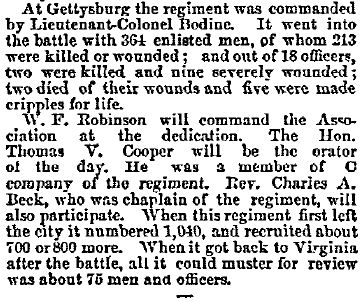

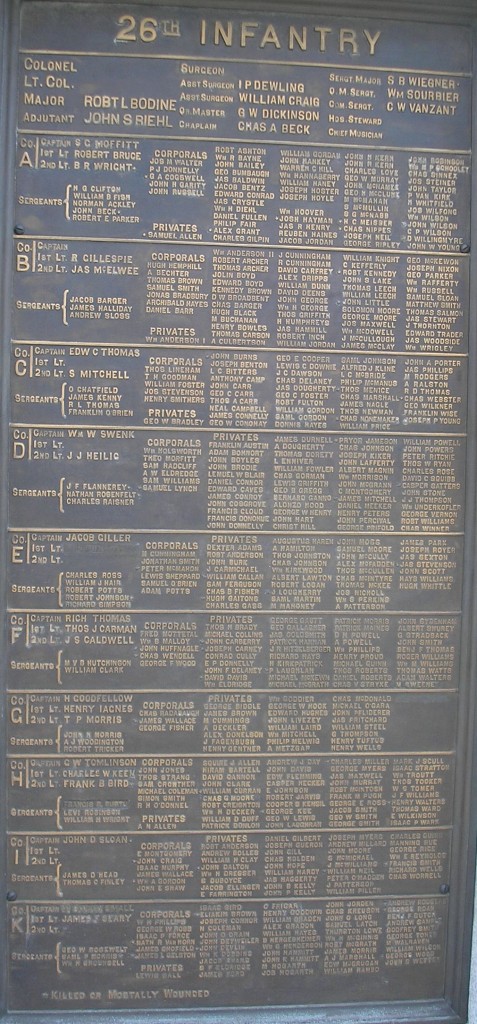

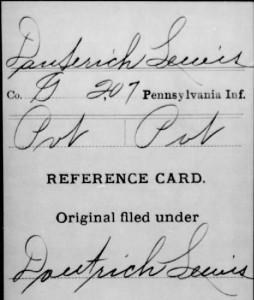
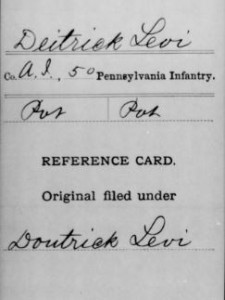
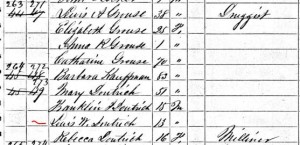

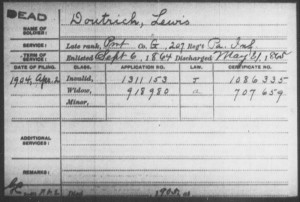

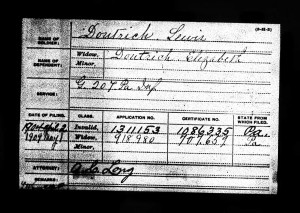
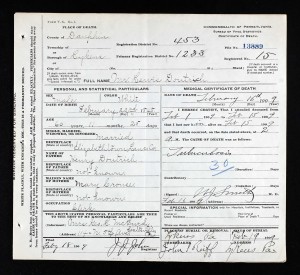


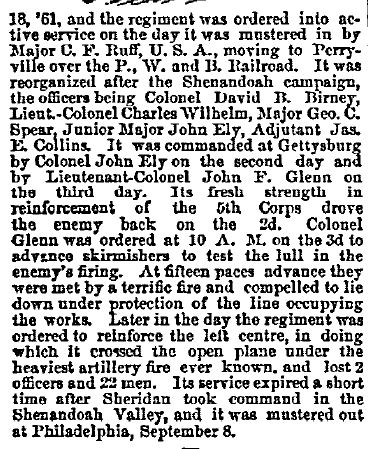


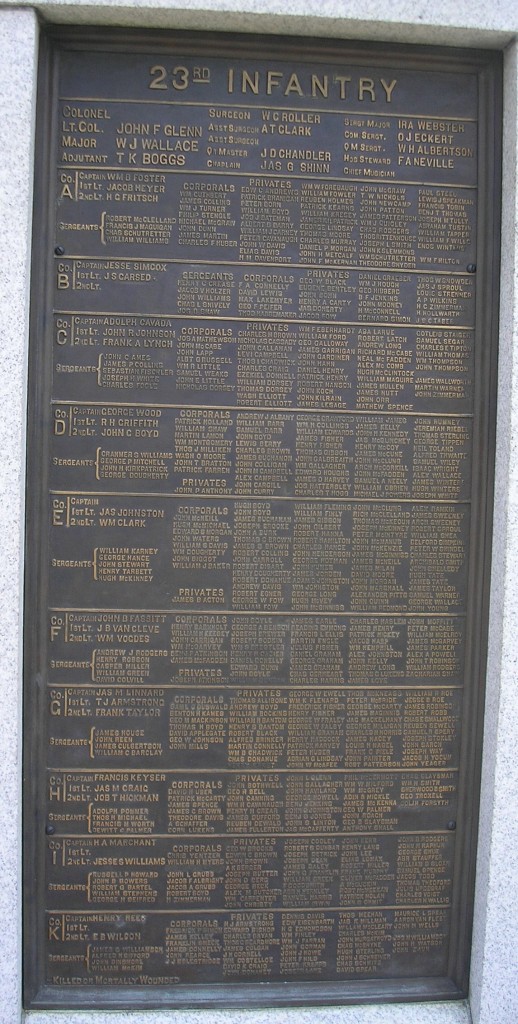

 a special police
a special police
